AirPods Max: The Big Questions For Apple's New Headphones
Apple's first over-the-ear headphones have long been rumored, and today we saw what the company has been working on. AirPods Max certainly look the part, sleekly built from stainless steel and breathable knit mesh, and they pack a hefty price tag to go with the big claims of "the ultimate personal listening experience" thanks to Adaptive EQ, spatial audio, and active noise cancellation.
AirPods Max aren't waterproof
Don't get any ideas about working out while wearing your AirPods Max, though, at least not unless it's a very, very low-intensity workout. Unlike AirPods Pro, the new over-the-ear headphones aren't sweat and water resistant: the earbuds have IPX4 compliance, but the headphones do not.
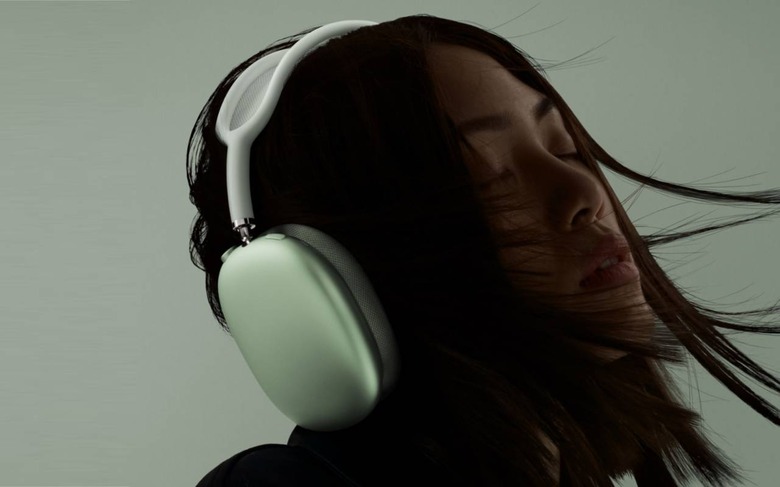
It means that they're not going to stand up to large amounts of sweat, and you should definitely avoid getting them wet in the rain or exposing them to other inclement weather. Now, that's not entirely unusual for headphones. Sony's well-reviewed WH-1000XM4 aren't splash-proof or water-resistant either. Nonetheless it's a disappointing omission on the spec sheet, given Apple's pricing here.
AirPods Max work with more than just Apple devices
For the best, most comprehensive AirPods Max experience, Apple is expecting you to use them with its other products. That's a long list, mind. Everything back to the iPhone 6s and first-generation iPhone SE for phones; multiple generations of iPad mini, Air, and Pro; the Apple Watch all the way back to Series 1; Apple TV 4K; iPod touch (7th generation); and Mac models s early as 2012.
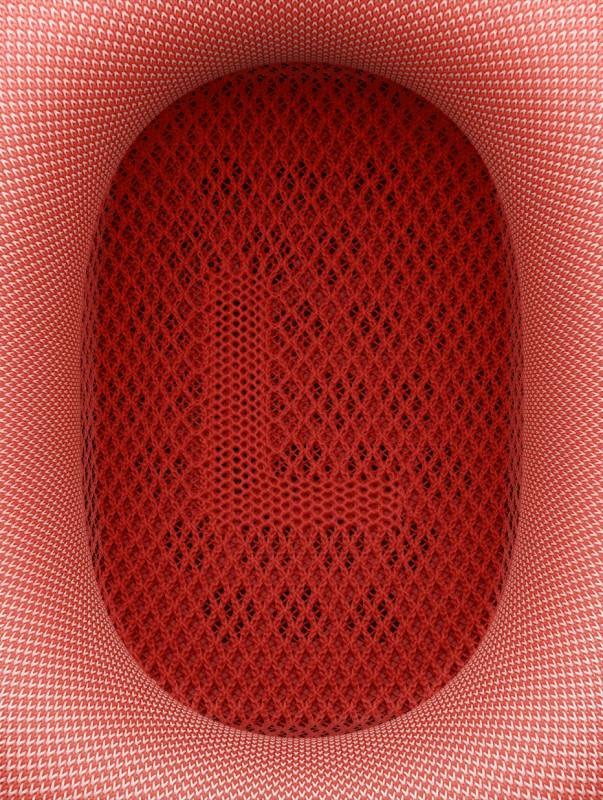
That's not to say that, if you're not thoroughly enmeshed in the Apple ecosystem – or if you have the occasional non-Apple product you want to use – AirPods Max won't play ball. They're Bluetooth 5.0 headphones at their core, after all. Still, there are some considerations to bear in mind.
"AirPods Max can be used as Bluetooth headphones with Apple devices using earlier software and with non-Apple devices, but functionality is limited," the company warns. Don't expect spatial audio support, for example: that requires a compatible iPhone or iPad, and the right movies, TV, or other video content encoded in 5.1, 7.1, or Dolby Atmos. Obviously you won't have Siri support if you're using an Android phone, either.
AirPods Max use Lightning, not USB-C or MagSafe
Apple may have embraced USB-C on its Mac range and, increasingly, its iPad range, but it's resolutely sticking with Lightning for its most portable devices. That means the AirPods Max will need a Lightning cable to recharge.
Apple includes that in the box – it's a Lightning to USB-C cable, just like the new iPhone 12 family comes with – though not a power adapter. You'll need to supply your own. The Lightning port itself is on the bottom of the right AirPods Max earcup.
Also absent is wireless charging. While the latest AirPods and AirPods Pro can top up their charging case with a Qi pad, AirPods Max don't have that support. That's a shame, as being able to use the new MagSafe charging adapter that Apple launched alongside the iPhone 12 and iPhone 12 Pro would've been a pretty streamlined solution.
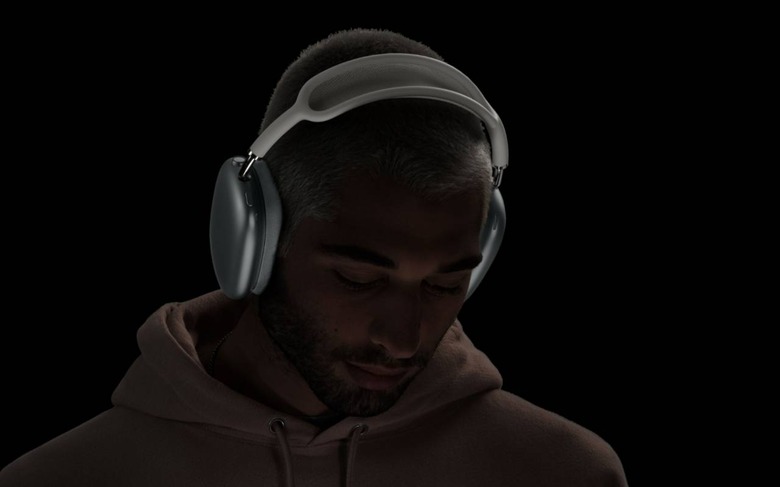
With a Lightning connection, you're looking at around 1.5 hours of listening time after 5 minutes of charging. If you want to maximize battery life, meanwhile, Apple recommends putting the AirPods Max into the supplied Smart Case. That automatically puts the headphones into an ultra-low-power state, the company says, while also mostly protecting them from bumps and scrapes. There's a cut-out so you can still plug in the charge cable, too.
The Digital Crown does more than on the Apple Watch
AirPods Max sees the first expansion of the Digital Crown, which makes the jump across from the Apple Watch. Apple's physical controller makes plenty of sense on the smartwatch, where it's used to navigate through lists as well as to select options. On the new headphones, though, Apple is making even greater use of it.
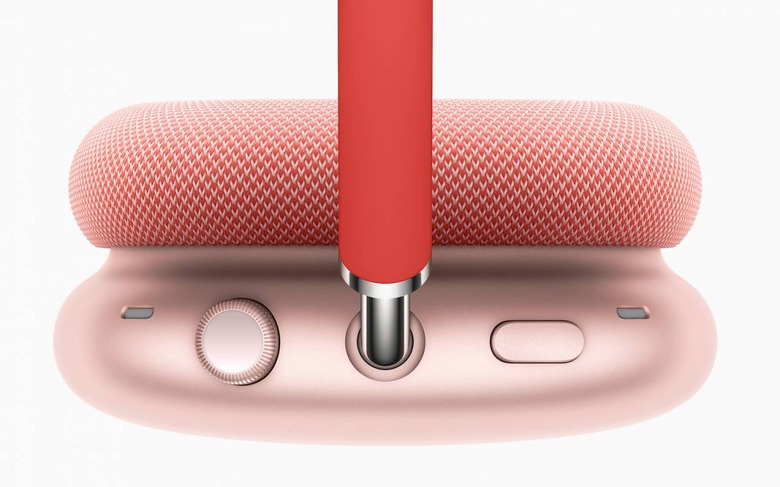
Turning the Digital Crown adjusts volume, as you'd expect. Pressing it once toggles between play and pause for music, and answers an incoming call. You can press it twice to skip forward through your playlist, and press it three times to skip back.
Finally, you can press and hold the Digital Crown to trigger Siri. That's on top of "Hey Siri" wakeword support, which is part of the Apple H1 chipset.
AirPods Max will support listening
With wireless headphones so popular these days, it's easy to assume that a wired option is passé. Problem is, there are definitely times when having the option to plug in a cable can be worthwhile.

If you're on a plane, for example, being able to use a headphone cable with the in-flight entertainment system can save you from using the cheap earbuds most airlines offer. It's something Sony, Bose, and others allow for.
Update: According to TechCrunch's Matthew Panzerino, AirPods Pro do support an optional 3.5mm audio cable. However they do not function passively, i.e. without a charge. That's unlike headphones like the WH-1000XM4, can actually be used even if they're powered off. That's useful if you've forgotten to charge them up, but still want to listen to music (albeit without features like active noise cancellation). In that situation, AirPods Max will need charging before you can connect them again.
Are Apple's AirPods Max worth $549?
The biggest question is around Apple's pricing, and there things get complicated. On the one hand, $549 puts them a couple of hundred dollars higher than the obvious rivals from Sony, Bose, Sennheiser, and others – as well as maintaining a healthy gap between AirPods Max and the Beats headphones range. It's fair to come to Apple's headphones with higher expectations, then.
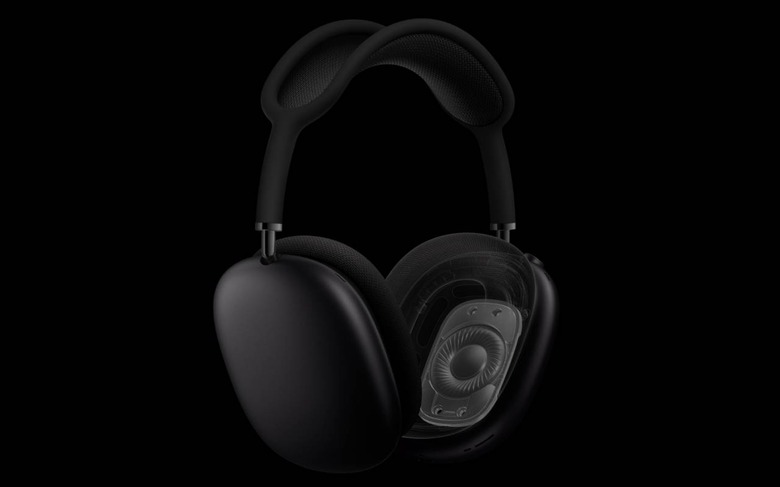
At the same time, if you consider the broader headphones market, it's not hard to spend twice what AirPods Max will cost, or even more. Prosumer headphones – typically wired, not wireless – can cost several thousand dollars or more for the audiophile segment.
Whether the AirPods Max live up to their price tag, then, will depend on just how good they sound. Apple is certainly making all the right noises (pun intended), with a massive 40mm dynamic driver on each side, along with automatic EQ processing depending on how the headphones are fitting on your head. We'll know just how well that all works come December 15, when AirPods Max start shipping.
